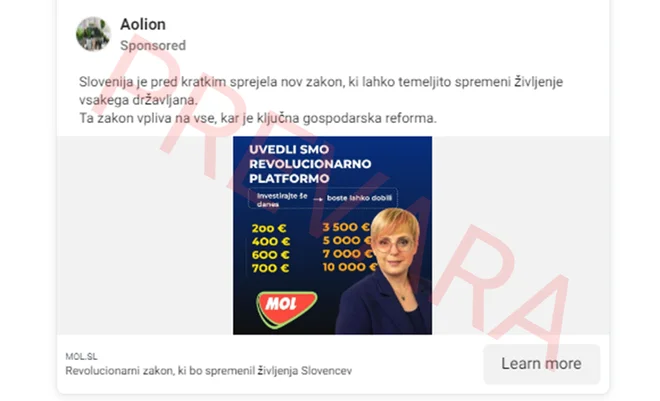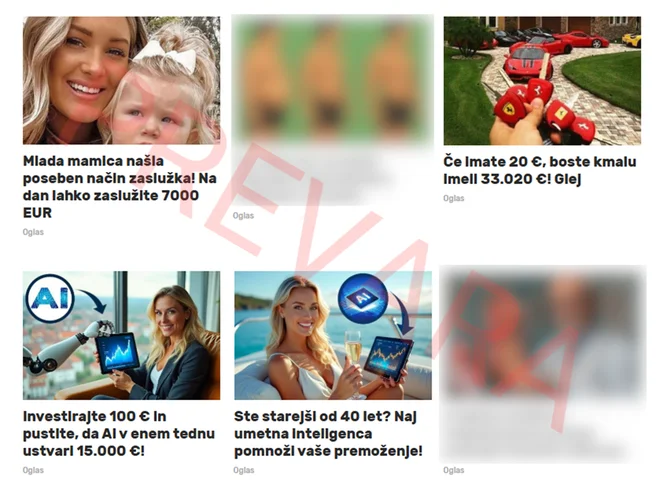Do not strangle on networks, many are investment fraud

SI-CERT, National Cyber Security Center, points to the rise of online ads leading to various forms fraud with the aim of financial damage to users. As they stated, these ads appear mostly as sponsored posts on social networks such as Facebook, and on various news portals through advertising networks.
The average amount of damage € 27,000
Click on a fraudulent ad is likely to divert users to investment deceptionwhich damaged the Slovenes by more than € 19 million last year, SI-Cert warned. However, EUR 27,000 is the average amount of harm. Advertisers for fraudulent investment schemes most often appear on Facebook, and they usually abuse images of different celebrities and brands, with the aim of persuading and creating legitimacy.
Photo: SI-CERT
Double trap
Victims of investment deceptions often seek help in reimbursing lost money. In doing so, SI-CERT points out, they may encounter a new recovery fraud. Namely, fraudsters present themselves as a refund experts and also advertise their services on the Meta network. For a more convincing guise, they copy the image and names of Slovenian institutions, e.g. Slovenian police, FURS, various ministries and promoting Facebook posts on criminals prosecuting and promising assistance to the injured.
Also widespread are ads for false online stores that use names such as: Slovenia, Slovenia or Ljubljana to create the impression of legitimacy. Recently, attackers have also been using artificial intelligence tools to create convincing ads in Slovenian.
The problem is how few leverage is available to limit the abuse of advertising tools and protect users.

Photo: SI-CERT
Platforms should take more effective action
When users come across such fraudulent ads on the Meta network, we can log them in with a Report AD. “However, the many feedback we get from users show that the platform does not respond accordingly. The Polish response center for cyber security CERT Polska conducted a survey where 112 controversial fraudulent ads were reported, of which the Meta platform removed only 10 ads.
54 percent of mint frauds
In the last report on consumer security and financial crime, which covered 2023 and 2024 and users from Slovenia, Revolut pointed out that Meta platforms remain the largest source of fraud reported. Fintech, with more than 50 million users in the report, points out that attackers are increasingly turning to encrypted messages (such as WhatsApp and Telegram) to take advantage of the victims. The proportion of frauds originating in these platforms has increased significantly in the second half of 2024. Meta (Facebook, Instagram and WhatsApp) platforms still represent 54 percent of all fraud, registered revolution, according to SI-Cert’s publication on their website.
Users are advised to always check the Facebook page behind a Facebook ad when it stands out according to their promises. Very low prices of established brands, exceptional returns in investments, home -made earnings, sales for just a few euros and the like, turn out to be the best bait.







/s3/static.nrc.nl/images/gn4/stripped/data132850061-63fc6c.jpg)
